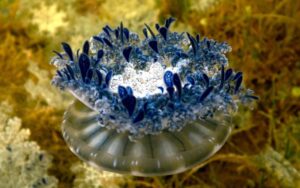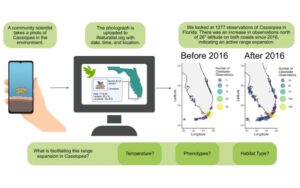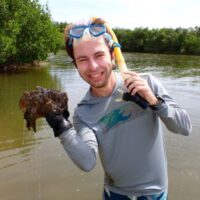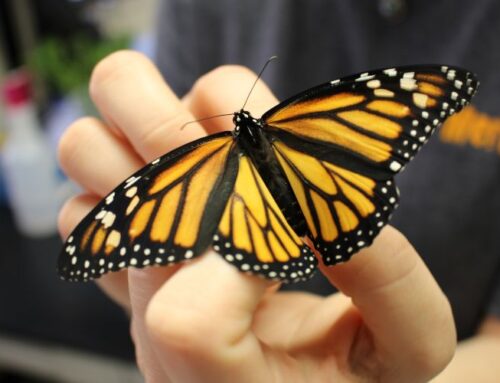Community Science Sheds Light on Northward Expansion of Upside-Down Jellyfish in Florida
By: TAMU Biology
 Jellyfish that live upside-down on the seafloor are quietly colonizing new territory in Florida and thousands of beachgoers and snorkelers helped scientists discover this climate-driven expansion!
Jellyfish that live upside-down on the seafloor are quietly colonizing new territory in Florida and thousands of beachgoers and snorkelers helped scientists discover this climate-driven expansion!
In their new study, published in Science of the Total Environment, researchers from the Strader Lab at Texas A&M University used over 1,200 iNaturalist observations dating from 2003 to 2023, along with coastal temperature data, to trace the changing distribution of Cassiopea (The upside-down jellyfish). The findings indicate that populations of these striking jellyfish have established themselves farther north than ever before, with consistent populations now found in Fort Pierce and Tampa Bay since 2021. This expansion coincides with warming ocean temperatures as well as a marked reduction in extreme cold events in northern Florida, which may have previously limited the expansion of this tropical species.
 When asked about what it was like working with community science observations, lead author Myles Wagner said “Revealing such a drastic range shift utilizing observations of everyday people in Florida shows just how much can be achieved when scientists work with local communities. This work would have been impossible using traditional scientific sampling methods alone. I would encourage others to explore what is possible when utilizing community generated data and I certainly look forward to working with more iNaturalist data in the future.”
When asked about what it was like working with community science observations, lead author Myles Wagner said “Revealing such a drastic range shift utilizing observations of everyday people in Florida shows just how much can be achieved when scientists work with local communities. This work would have been impossible using traditional scientific sampling methods alone. I would encourage others to explore what is possible when utilizing community generated data and I certainly look forward to working with more iNaturalist data in the future.”
 In addition to recording the geographical expansion, the researchers also explored if unique morphological features or habitat type may be associated with the expansion. They found some differences in coloration and morphology between regions and their habitat surveys revealed Cassiopea thriving across a wide variety of coastal ecosystems, highlighting the species’ broad tolerance to different environments. The authors emphasize the importance of understanding these range shifts since Cassiopea can alter the habitats they are expanding into and compete with local organisms. Not to mention the increased risk of humans being stung by these jellyfish.
In addition to recording the geographical expansion, the researchers also explored if unique morphological features or habitat type may be associated with the expansion. They found some differences in coloration and morphology between regions and their habitat surveys revealed Cassiopea thriving across a wide variety of coastal ecosystems, highlighting the species’ broad tolerance to different environments. The authors emphasize the importance of understanding these range shifts since Cassiopea can alter the habitats they are expanding into and compete with local organisms. Not to mention the increased risk of humans being stung by these jellyfish.
These results not only show how a tropical species is expanding its territory, but they also demonstrate the power of public data in tracking how marine life is responding to global change. The study provides critical insights for marine ecologists and resource managers seeking to predict the future impacts of “tropicalization”, the movement of tropical species into temperate zones, on Florida’s iconic coastal ecosystems.
Dr. Marie Strader
Assistant Professor, Department of Biology
Texas A&M University
mstrader@bio.tamu.edu





